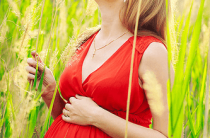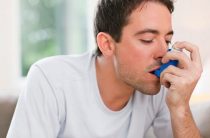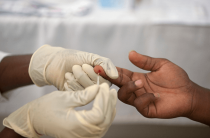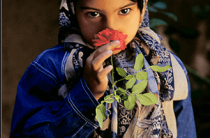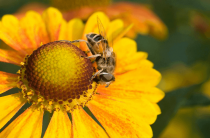Allergy is becoming more and more common every day. Naturally, in view of the whole situation, an allergy to flowering is also becoming an increasingly common disease. The manifestations of this disease cause a significant amount of inconvenience to the patient, disrupting his usual rhythm of life.
Causes of the spread of allergies
- Industrial pollution. Allergies are most common in areas with an unfavorable situation in terms of ecology. Harmful substances that penetrate the human body together with industrial emissions and waste lead to significant disruption of the human body.
- The use of cosmetic chemicals. Although they do not pose a direct threat to health (provided that high-quality goods are purchased), they contain substances that irritate our immune system, which are part of everyday household and personal hygiene products.
- A large number of preservatives, dyes and other chemical additives in the food industry. Human immunity reacts to the constant presence of these foreign elements in different ways. In some cases, this is fraught with allergies.
- Low level of physical activity. For human immunity, normal physical activity is simply necessary. This stimulates his normal work. Unfortunately, the rhythm of life of most urban residents is far from physical activity. The use of transport, the elevator, sedentary work ... all this leads to a weakening of the immune system. For prevention, it is recommended to devote three days a week to non-traumatic moderate physical activity.
- Lack of breastfeeding in children. Breast milk, in addition to the overall health of the child's body, is involved in the formation of healthy immunity. Powdered formulas will never replace mother's milk. Do not even think about feeding your baby dry formula unless there is objective evidence for this.
Plant pollen allergy is an allergic reaction that occurs as a response to pollen entering the human body through the respiratory tract. During pollination, the pollen of male plants falls on female plants, resulting in fertilization. Due to its structure, male pollen contains certain protein elements that are perceived as foreign by the immune system of a person suffering from allergies.
This malfunction occurs in the body for various reasons. As a result of this, the antibodies formed in the body combine with the protein structures of the pollen and begin their journey through the bloodstream. In our body there are certain cells that accumulate substances involved in the formation of an allergic reaction.
The allergen-antibody complex acts on these cells in such a way that they release provocateurs of allergic reactions. Their action is reduced to a variety of allergic reactions.
Flower allergy symptoms
Pollen allergy is a type of respiratory allergy. This means that the main reactions caused by this disease occur through the impact on the respiratory system.
Specific symptoms of pollen allergy:
- Congestion of the mucous membranes of the nose, causing difficulty in breathing;
- eye redness, tearing and sneezing;
- allergic cough;
- Asthmatic manifestations, expressed through shortness of breath, dry cough, hoarse breathing.
However, it is worth remembering that with respiratory allergies, general allergic manifestations are also possible, among them:
- Increased body temperature, aching joints, weakness and irritability;
- Skin manifestations, expressed in redness, peeling, the formation of allergic ulcers, constant itching;
- Tissue edema, the largest of which is laryngeal edema as part of anaphylactic shock or Quincke's edema
Pollen Allergy Diagnosis
The main symptom of manifestations of pollen allergy is the seasonality of this phenomenon. It is due to the fact that flowering plants occur at a certain time. In general, the flowering period lasts from mid-spring to early autumn. Often, the patient himself knows what flowering he is allergic to. Cases as such of allergy to any pollen are so rare that it makes no sense to consider them in this article. Basically, a characteristic allergy to one or more plants. But in some cases, it is not possible to identify a pollen allergy by the onset of symptoms. For example, during the flowering period of several plants of allergens, which are distributed evenly in the places where the patient lives, it is very difficult to diagnose an allergy to a certain pollen. It is for this that special tests are needed to determine the type of allergy.
Pollen Allergy Tests
General blood analysis. This diagnostic event is the basis for any analysis, as it shows the general state of health. This is important, since it is important to take this indicator into account when prescribing therapy in any case. When analyzing blood, the doctor pays attention to:
- Hemoglobin level. Hemoglobin is a protein that, thanks to its reactive iron content, carries oxygen. This is its vital function. Low hemoglobin is observed with anemia.
- Leukocytes are immune cells that take part in the inflammatory response. Their increase is observed in the inflammatory process.
- Basophils and eosinophils are subtypes of white blood cells that are involved in allergic reactions. With allergies, their increase is often noted.
- blood sugar level;
- Traces of parasitic invasion
Skin tests
Skin tests are tests based on the application of a suspected allergen to areas of the skin, in various ways, in order to detect a reaction to the allergen in a specific area. There are several types of skin tests:
Scarifying tests. The essence of this method lies in the fact that the patient, by applying shallow incisions (after all, scarification is nothing more than scarring).
The incisions should be of minimal depth, as should the amount of allergen. The introduction of allergenic material with a syringe.
Again, the allergen is taken in the minimum amount so as not to cause an extensive allergic reaction. Application tests . A special strip containing the allergen is applied to the patient's skin. This test is the safest, but nevertheless it is also the most inaccurate.
When performing skin tests, it is necessary to understand that, although in a minimal amount, the allergen still enters the body. Therefore, the patient should be familiar with all kinds of complications, as well as ways to prevent them. Prior to skin tests, it is necessary to refrain from using histamine preparations and glucocorticoids, both local and systemic. The fact is that these drugs inhibit the immune response and the necessary reaction may not occur.
Tracking the reaction to skin tests takes place within three days. Since the stages of the immune response may differ in different patients. The reaction can manifest itself both in the first minutes and within a few days.
Skin tests are not performed if:
- The patient is in a state of pregnancy or lactation;
- There is an acute infectious disease. Regardless of the source of infection;
- Acute forms of allergies;
- The patient is an elderly person;
Blood test for total immunoglobulin
Immunoglobulins are special proteins that take part in the immune response of our body. General immunoglobulins are involved in the immediate response of the body to an irritant. Blood for the determination of immunoglobulin is taken on an empty stomach from a vein. An increase in the overall level of immunoglobulin may also indicate helminthic invasions. Therefore, it is recommended to pass further tests for eggs of worms in order to exclude this disease.
Specific immunoglobulins are produced in response to specific allergens and are the most accurate method for determining an allergic reaction to a specific substance.
When diagnosing allergies with a specific pathogen, it is necessary to have all the data that relate to the course of the disease: test results, patient complaints, features of his life, etc. The diagnosis can only be made on the basis of a complete and comprehensive examination.
Prevention of allergy to flowering
If you follow the precautions, it is possible to completely avoid the symptoms of an allergy. After all, simply avoiding contact with the allergen is a reliable way to prevent allergic reactions.
Preventive actions:
- If you know what kind of plant you are allergic to, it is better to move during its flowering period to areas with a type of climate in which this plant does not grow;
- Clean your room more often. This will help to neutralize the volatility of pollen, due to which it enters the lungs;
- Install special meshes on the windows with a minimum clearance that block the ingress of pollen;
- Use air conditioners, as well as special room filters;
- Exercise and strengthen the immune system before contact with the allergen. The more you take care of the health of your immune system before the start of the flowering period, the less it will develop allergic symptoms when in contact with the pathogen;
- Follow a hypoallergenic diet during flowering;
- Get enough vitamins and minerals;
- The basis of the diet should be products that are not prone to provoking allergic reactions.
Diet for pollen allergy
And so, when compiling a diet for pollen allergy, it must be taken into account that there are a number of foods that have a high allergenic potential. Among such products: bee products, citrus fruits, chocolate, shrimps, mussels, oysters, crustaceans, lobsters, lobsters, hard cheeses, strawberries, raspberries, blackcurrants, viburnum, cranberries, vegetables and fruits of bright colors (tomatoes, bell peppers, etc.) , celery, vinegar, spices.
These products have a high allergenic potential. This is due to their stimulating effect on the mechanism of development of allergic reactions. If you are allergic to pollen, it is better to refuse to use them at the time of exacerbation, as well as a week before flowering, so as not to aggravate the course of allergic reactions.
It is also impossible to productively treat pollen allergy if the patient suffers from intestinal dysbacteriosis. The fact is that the so-called “beneficial microflora” is normally contained in the intestine. It consists of bacteria that are beneficial for our digestion, which also protect us from harmful flora. With its decrease, the harmful flora begins to flourish and the products of its vital activity cause allergic reactions.
Dysbacteriosis is not a disease with independent development. Its development occurs as a complication of intestinal infections, injuries of the gastrointestinal tract, decreased immunity, malnutrition, and antibiotics.
During the treatment of dysbacteriosis, it is necessary to follow a diet that excludes fatty foods, spicy, salty, sour and other foods that have an irritating effect on the mucous membrane of the gastrointestinal tract. Dairy products and other substances containing probiotics are consumed in large quantities, which contribute to the reproduction of the normal intestinal flora.
Remember that this article is for informational purposes only and serves solely to ensure that the person who reads it begins to take their health and well-being more seriously. When the first symptoms of allergy appear, you should immediately contact a competent specialist who will carry out appropriate diagnostic measures and prescribe treatment.
